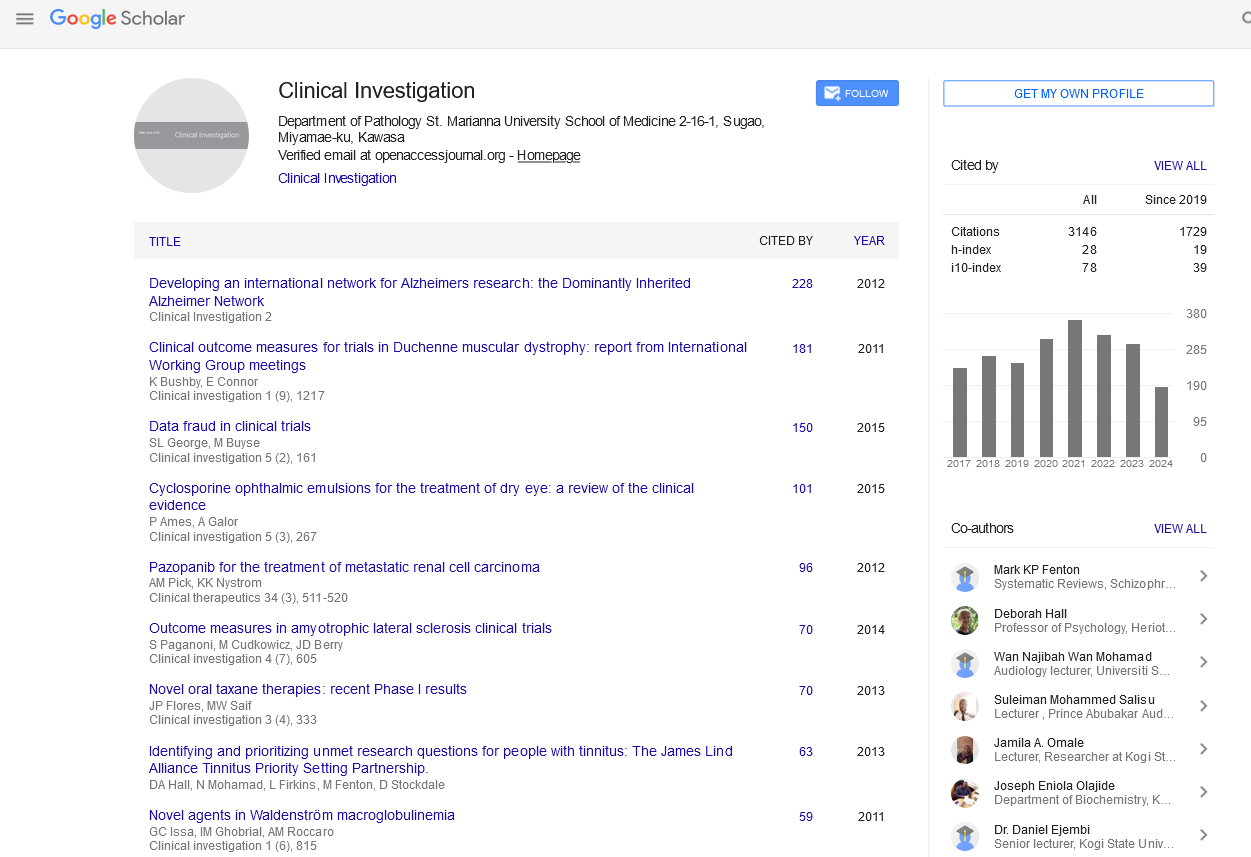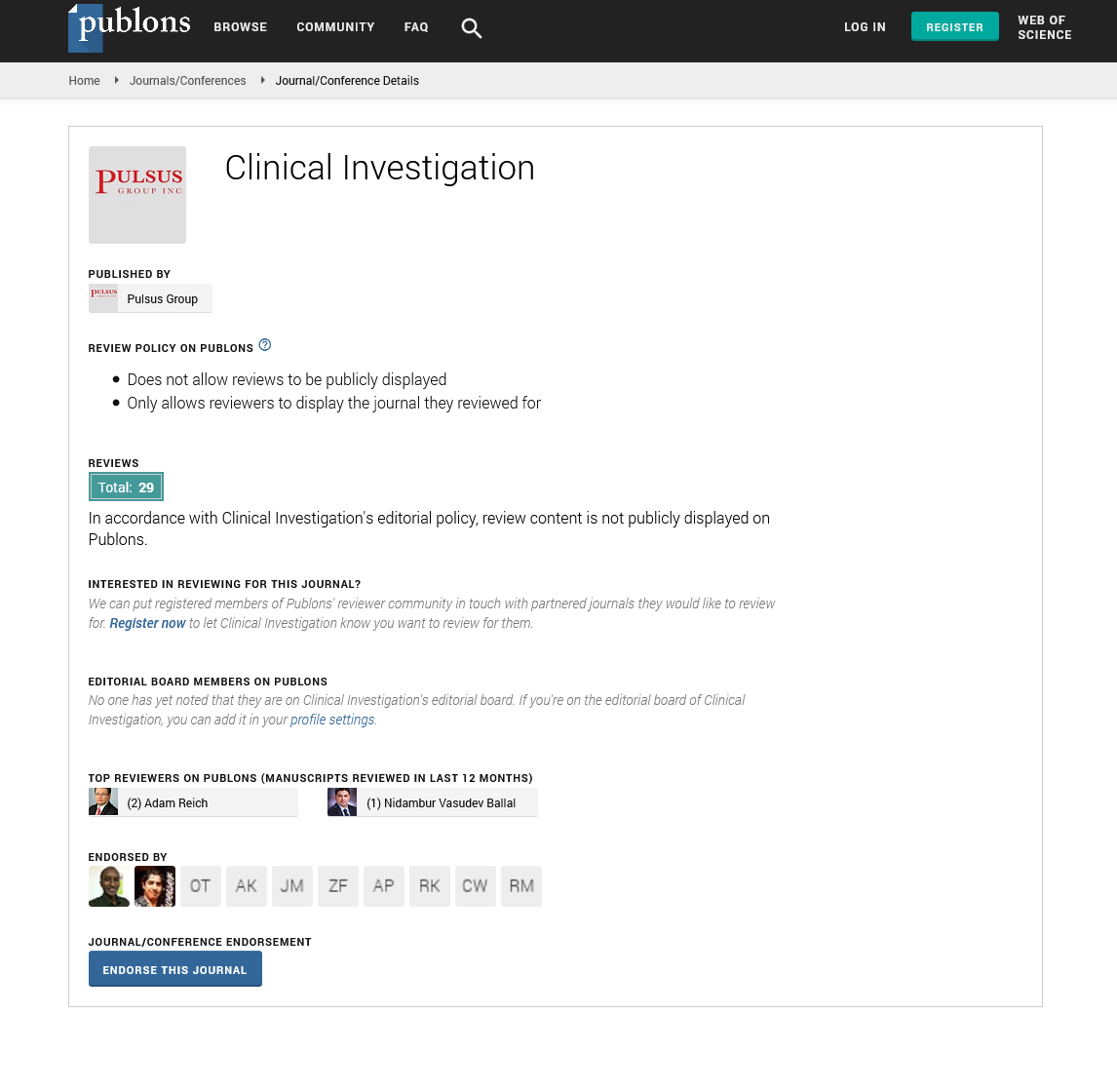Case Report - Clinical Investigation (2025) Volume 15, Issue 1
Short note on surgical case report
- Corresponding Author:
- Borayek Saad
Department of Medicine, Assiut University, Assiut, Egypt
E-mail: abojo920@gmail.com
Received: 03-Jul-2023, Manuscript No. FMCI-23-104641; Editor assigned: 07-Jul-2023, PreQC No. FMCI-23-104641 (PQ); Reviewed: 21-Jul-2023, QC No. FMCI-23-104641; Revised: 13-Jan-2025, Manuscript No. FMCI-23-104641 (R); Published: 20-Jan-2025, DOI: 10.37532/2041-6792.2025.15(1).01-03
Abstract
Intestinal obstruction is a common surgical emergency with diverse etiologies. This case report details the clinical presentation, diagnostic workup, and management of a 68-year-old male presenting with acute intestinal obstruction due to adhesive bands. Prompt recognition through clinical evaluation and imaging facilitated timely surgical intervention. Operative findings revealed dense adhesions causing bowel strangulation, necessitating segmental resection. Postoperative recovery was uneventful, with resolution of symptoms and return of bowel function. This case underscores the significance of early intervention and highlights the challenges encountered in the surgical management of intestinal obstruction, advocating for a multidisciplinary approach for optimal patient care.
Keywords
Evaluation • Intestinal obstruction • Emergency • Surgical management • Patient
Introduction
Surgery is a very important specialty in medicine. The surgeon should be brave with a heart of a lion, eyes of an eagle and fingers of a woman [1]. Good surgeon knows the case to be operated, but a better surgeon knows the case not to be operated [2]. Team work in the operating room is critical, this requires an efficient leader [3]. The senior surgeon should transfer his experiences to the trainees in his team [4]. In my case report here, I faced a challenging case, but my team and I were able to manage the case and fortunately the patient healed and became better.
Case Presentation
On 30/4/2023 I was notified by the surgical resident in Italy hospital (in Egypt) to examine a “critical surgical case”. So, I arrived at the hospital 10 minutes after the notification.
She was a female patient, 37 years old, with a history of caesarian section a week ago in the same hospital by the obstetrics department giving a well-developed male newborn.
She now is complaining of abdominal pain for a week, feverish 38.5°C. On examination I found a surgical abdomen with distension, rigidity, tenderness and weak peristalsis. The patient was cooperative, alert, conscious and oriented to person, place and time. However, she was so ill with leukocytosis 24,000/cmm, her pulse was 110 beats per minute, regular but bounding. Her blood pressure was 110/70 mm Hg, and she stated that she visited a general practitioner a day ago and he advised here to refer to the general surgery department in the city hospital.
Past history
The patient had a history of a first caesarian section 10 years ago, that was troublesome and was followed by adhesive intestinal obstruction, there was a longitudinal scar in her abdomen for exploring the abdomen to do adhesiolysis treat that adhesive intestinal obstruction 10 years ago one month after that first C/S FIGURE 1 [5,6].
Current disease
So, this patient is now suffering from a complication of the second caesarian section and I asked about the C/S one week ago, to discover that it was difficult and the obstetrics team called for help that time and the general surgeon assured them to go on, however, he didn’t get into the field.
Diagnosis and decision
My provisional diagnosis was iatrogenic GIT injury done accidentally by the obstetrics team one weak ago, so I decided to do formal laparotomy to explore the patient abdomen. Anesthesia team was notified, they examined the patient and put the plan of anesthesia, after taking the consent and completing the medico legal requirements. After preparing my team, taking in consideration and fulfilling all the requirements of quality and infection control supervisors, I started the operation.
Results and Discussion
Operation
I did a vertical midline incision in the lines alba, 5 cm above and 5 cm below the umbilicus, to gain opportunity to get it wide above or below according to the findings.
I did my incision above the scar of the laparotomy done 10 years ago, so it was so difficult, with adhesions between the intestine and the parietal peritoneum, but I was very careful no to do any injury, however, I succeeded to do the incision without injuring any abdominal structure.
When I opened the abdomen, I found a liquid stool, so I used the suction to drain it, I drained 6 liters of stool from the patient abdomen.
Then I used sterile saline to “wash” the abdomen, I used 2 liters of saline each time to do an abdominal lavage and drain it by the suction, I related it 6 times, so I washed the abdomen by 12 liters of saline divided into 6 times, till I got a clean abdomen with fresh looking organs.
On exploring the abdominal organs, I found an injury at the ileum, one meter proximal to the ileocecal junction, and I did resectionanastomosis for it [7]. I did my anastomosis by the conventions method using vicryl 3/0 on a round needle, in two layers [8].
I completed my exploration and called the obstetrics team to get sure there are no other injuries to abdominal or pelvic organs, then I put a drain and closed the abdomen [9].
I oriented the resident how to manage the postoperative period and I was following up the patient daily, one week later I removed the drains and 10 days after the operation I removed the stitches [10].
Conclusions
• Obstetricians should do their best to try normal labour and don’t rush into caesarian section, for C/S is not that operation without complications.
• When a surgeon is called to assess a difficult C/S, he should get into the field and not giving an opinion except after being dead sure there is no injury done.
• A virgin abdomen is a goal for the surgeon, the good surgeon tries to treat his patient conservatively as much as he can, for opening the abdomen once raises the risks of another operation more than that for a virgin abdomen.
• Adhesiolysis creates more adhesions, so the scientists should search for a medication to be used during the operation, either systemically or locall in the field, to avoid occurrence of adhesions.
References
- Mattar SG, Alseidi AA, Jones DB, et al. General surgery residency inadequately prepares trainees for fellowship. Ann Surg. 258, 440-449 (2013).
- Lewis FR, Klingensmith ME. Issues in general surgery residency training-2012. Ann Surg. 256, 553-559 (2012).
[Crossref] [Google Scholar] [PubMed]
- Sexton JB, Makary MA, Tersigni AR, et al. Teamwork in the operating room: frontline perspectives among hospitals and operating room personnel. Anesthesiol. 105, 877-884 (2006).
[Crossref] [Google Scholar] [PubMed]
- Counihan TC, Nye D, Wu JJ. Surgeons' experience with patients' concerns regarding trainees. J Surg Educ. 72, 974-978 (2015).
[Crossref] [Google Scholar] [PubMed]
- Bruggmann D, Tchartchian G, Wallwiener M, et al. Intra-abdominal adhesions: Definition, origin, significance in surgical practice and treatment options. Dtsch Arztebl Int. 107, 769-775 (2010).
[Crossref] [Google Scholar] [PubMed]
- Diamond MP, Burns EL, Accomando B, et al. Seprafilm(®) adhesion barrier: (2) A review of the clinical literature on intraabdominal use. Gynecol Surg. 9, 247-257 (2012).
[Crossref] [Google Scholar] [PubMed]
- Golub R, Golub RW, Cantu R, et al. A multivariate analysis of factors contributing to leakage of intestinal anastomosis. J Am Coll Surg. 184, 364-372 (1997).
[Google Scholar] [PubMed]
- Jex RK, Van Hcerden JA, Wolff BG, et al. Gastrointestinal anastomoses: Factors affecting early complications. Ann Surg. 206, 138-141 (1992).
[Crossref] [Google Scholar] [PubMed]
- Boley JP. The history of cesarean section. Can Med Assoc. 145, 319-322 (1991).
- Donnison J. Midwives and medical men: A history of the struggle for the control of childbirth. Historical Publications Ltd, London. 1988.



